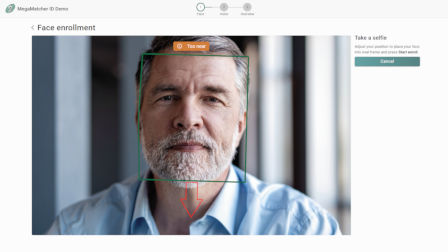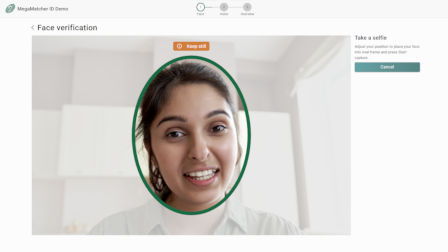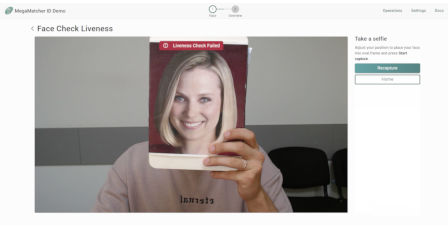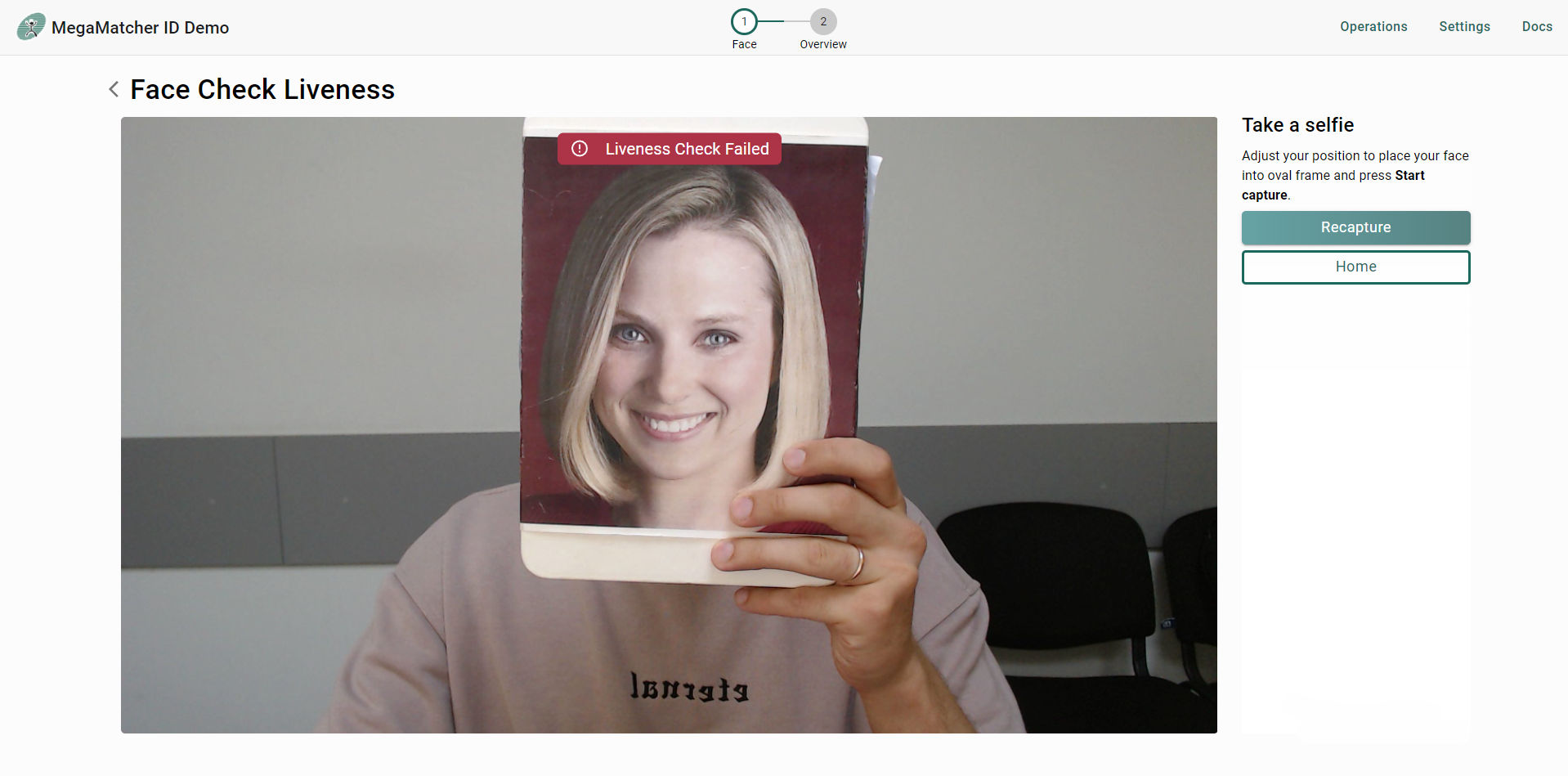Face Verification
Biometric identity authentication for secure mobile and web applications
Neurotechnology Face Verification system is designed for integration of facial authentication into enterprise and consumer applications for mobile devices and PCs. The simple API helps to implement solutions like digital onboarding, payment, e-services and all other applications that need enhanced security through biometric face recognition and presentation attack detection. The library size for the devices is small and it is inclusive of all functionalities also available on the server component, with the possibility to perform authentication both online and offline. The system is based on VeriLook technology with millions of deployments worldwide.
Different liveness detection functionalities are included to implement anti-spoofing mechanism with the possibility of configuring the balance between security and usability of the application.
Available on Android, iOS, Microsoft Windows, macOS and Linux platforms.
Key Features and Capabilities
- Registration and authentication. A biometric engine is used to register a person with their face and later authenticate the person. ISO 19794-5 checks, age estimation, hats detection and glasses detection can be also performed.
- Presentation Attack Detection (PAD). A set of specialized algorithms prevents fraud by checking if a live person is looking into the camera, or a spoof is shown, like another person's photo or image on a screen.
- Web service. The Web service component allows easy on-premise installation for using a light-weight browser or mobile app with live video stream capture.
- Mobile device SDK. The SDK component features a compact library to develop native, stand-alone apps for mobile devices.
- Security and privacy. Depending on the implementation, face images and biometric templates can be stored and used on the end-user device, server, or both, and are required only for template creation and face liveness detection, after which they can be discarded.
- Developer-friendly. Simple and comprehensive API provides operations for enrolling, verification, liveness check, quality check, as well as template interchange with other Neurotechnology products. Programming samples in multiple languages are available.
- Use-based licensing. The licensing model is based on the actual use of the system with only successful operations counted.
Applications
Neurotechnology Face Verification system is intended for developing end-user mobile and web applications which perform identity verification on personal devices (PC, mobiles, tablets) in systems like:
- digital onboarding;
- online banking;
- payments;
- shops self-checkout;
- government e-services;
- social networks and media sharing services.
Functionalities
Person Registration
A face is captured via camera or a web stream for template creation, which is then used for identity verification. Encrypted data provided upon successful enrollment. The facial template can be also transformed into a QR code.
ICAO compliance, age estimation, and detection of glasses and hats can be enabled to enhance face image quality and compliance, potentially leading to warnings for images that don't meet set quality standards. Face liveness can be optionally checked during the capture.
For privacy considerations the biometric data can be kept on the end-user device without any exposure.
Identity Verification
A face captured through a camera or web stream is verified against the face template which was created during the person registration. A face template can be also captured with an app, based on VeriLook SDK or obtained from a QR code.
Face liveness can be optionally checked during the capture, and ICAO compliance check can strengthen it even more.
For privacy considerations the biometric data can be kept on the end-user device without any exposure.
Face Liveness Check
An unsupervised face verification system can be tricked by several types of attacks, like presenting an image of another person in front of a camera. The Face Verification system is able to prevent this kind of security breach by determining whether a face in a video stream belongs to a real person in front of the camera.
The liveness detection can be performed in completely passive mode, when no cooperation is required from the user, and in active mode when the algorithm, in addition to passive checks, evaluates also user's response to perform actions like blinking or head movements.
Use Cases
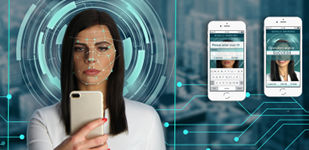
MSC Cruises uses Face Verification system for photos compliance check in the cruise pre-enrollment phase.

